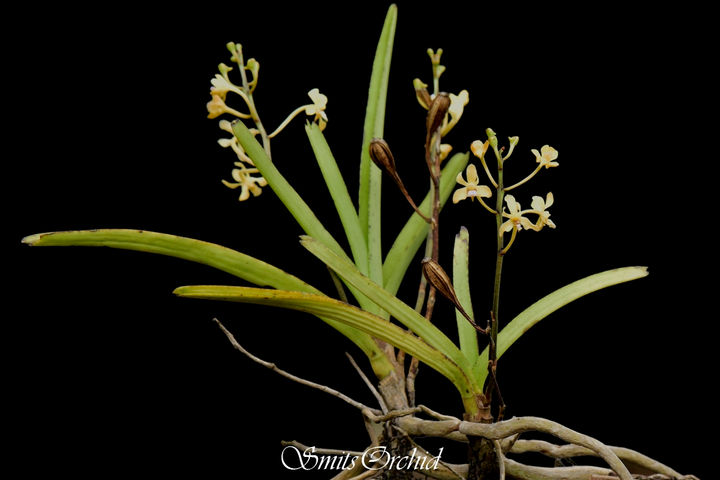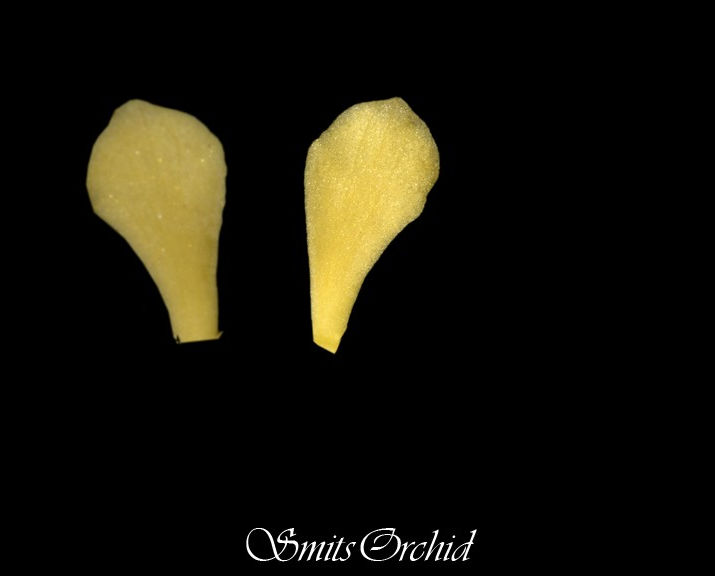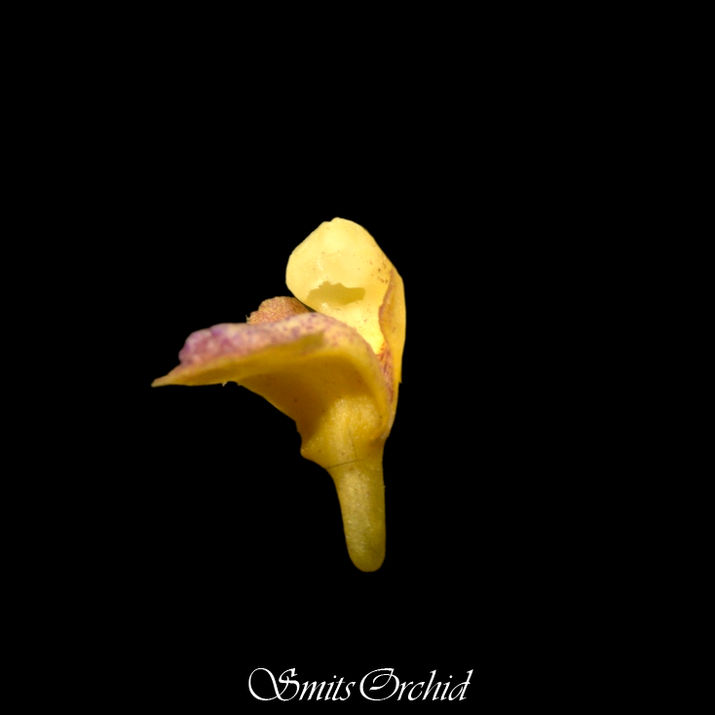
Vanda R. Br.
Subfamily Epidendroideae
Tribe Vandeae
Subtribe Aeridiinae
Derivation of name From the Sanskrit word vanda, meaning epiphyte.
Epiphytic or occasionally lithophytic herbs.
-
Roots usually emerging from nodes near base or lower portion of stem.
-
Stem usually stiffly erect, completely enclosed by distichously arranged persistent leaf-sheaths.
-
Leaves distichous, rigid, usually decurved or held erect, linear or oblong, adaxial surface channelled shallowly to deeply, jointed and sheathing at base, deciduous, apex premorse.
-
Inflorescence axillary, racemose, few- to many-flowered, floral bracts triangular.
-
Flowers resupinate, usually widely opening, exhibiting a wide range of colours and patterning.
-
Sepals and petals free, similar, elliptic-obovate, twisted or undulate, often tessellated, margins often reflexed, often narrowed at base.
-
Labellum usually rigidly attached but occasionally articulate, trilobed, side lobes orbicular to pointed, midlobe simple, deltoid or bilobed to fimbriate, usually shortly spurred but occasionally no spur or with an elongate, nectiferous spur; spur often with thickenings at entrance.
-
Column usually lacking a foot; pollinia two, waxy, spherical, grooved; rostellum shelf-like.

Vanda testacea (Lindl.) Rchb.f.
In Gard. Chron., n.s., 8: 166 (1877)
-
Aerides testacea Lindl. in Gen. Sp. Orchid. Pl.: 238 (1833)
-
Aerides wightiana Lindl. in Gen. Sp. Orchid. Pl.: 238 (1833)
-
Vanda vitellina Kraenzl. in Gard. Chron., ser. 3, 12: 206 (1892)

Ecology Epiphytes found growing on Terminalia
Stem 1-1.5 cm thick, sheathed.
Leaves spreading, 3-15 x 0.4-0.7 cm, channelled, coriaceous, oblong or linear-oblong, irregularly 2-or 3-toothed at apex.

Inflorescence racemes 3-17 cm long, erect; peduncles 1-3 mm thick, terete, brown with a few, 2-4mm long, oblong-acute, sheaths. Peduncles are persistent and often 9 or more old ones may be seen on the same plant.

Flowers pale yellow, long pedicellated, bracteate, generally produced at the apical region of peduncle.
Bracts 2.5x 2.5 mm, ovate or ovate-oblong, acute, scabrid, brown, irregularly serrulate or subentire, 3-nerved.

Sepals subequal, 8x 5mm, obovate-oblong, obtuse, pale yellow, the lateral ones slightly broader and subacute.
Petals 8x 4 mm, broadly obovate-oblong, somewhat clawed, obtuse, rarely slightly retuse, entire, glabrous, 1-nerved, pale yellow.
Lip 3-lobed; lateral lobes adnate to foot of column, arising from the sides of the mouth of the spur, oblong, obtuse; midlobe 6X4 mm, decurved, oblong or cunneate-oblong, the apex dilated, somewhat 3-lobed or perfectly semicircular, obtuse or retuse sub entire or irregularly crenulate, the portion below the apex with 2. blue-lilac caruncled ridges and a central channel in between.

Spur 2.5 mm long, conical, obtuse, yellow, formed by the direct continuation of the lateral lobes of lip.
Column small, pale yellow, with a short foot. Anther 2.5x2 mm, oblong-orbicular, apex emarginate; pollinia 2, cleft, globose, with a short caudicle and a small transversely-oblong gland.
Ovary with pedicel 8 mm long, shallowly grooved, pale yellowish-green,

Capsules 2-2.5X0.7cm, fusiform or oblong-elliptic; pedicels 1-1.5 cm long.
Flowering: May to June.
Fruiting: July onwards.







